#Neural DSP
Text
riffing
4 notes
·
View notes
Text
Neural DSP announces Cortex Control Launch
Neural DSP Technologies has just unveiled Cortex Control, a cutting-edge desktop platform that revolutionizes the way users interact with the Quad Cortex amp modeler. This launch marks a significant milestone in the world of amp modeling, offering a range of user-experience enhancements and creative control options.
Cortex Control
Developed through extensive research and shaped by feedback from…
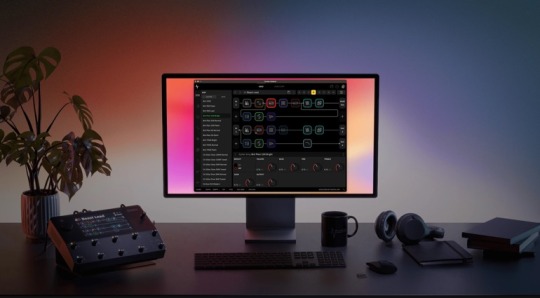
View On WordPress
#Cortex Control#Impulse Response#Instagram#MacOS#Neural Captures#Neural DSP#Quad Cortex#USB#video#Windows#YouTube
0 notes
Text
The intro is done!
youtube
0 notes
Text
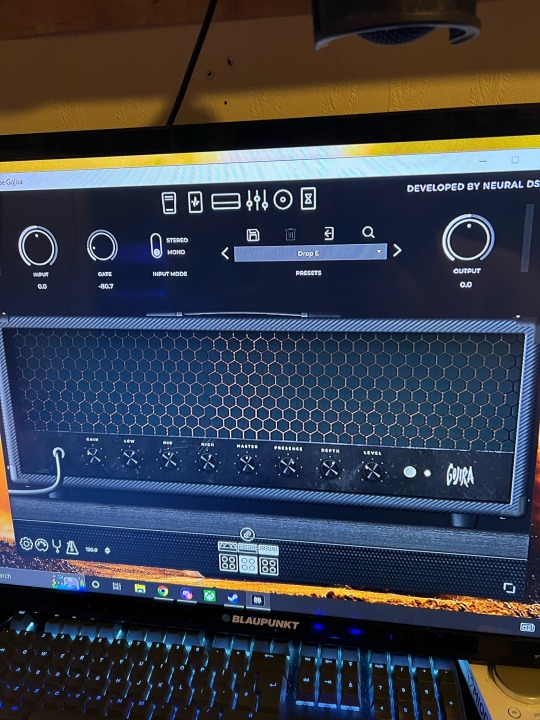
Okay, I get the hype behind this now. Holy fuck.
1 note
·
View note
Text
DSP Neuralプラグイン で録音...
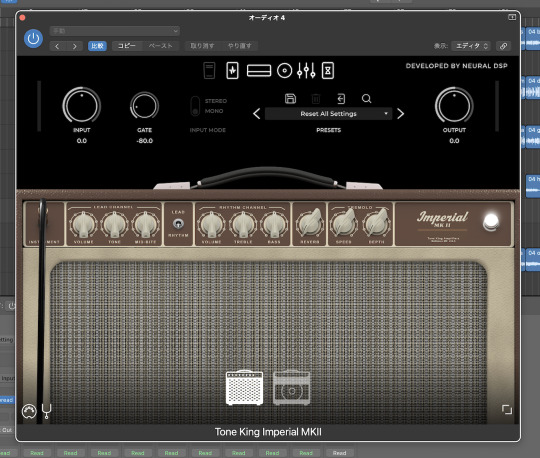
世界中のギタリストに大人気のDSP NeuralのプラグインでREC...
ここのソフトはいくつか持っていて、
たまに家でのデモ録音や仕事でも使ったりしてます。
ギターの録音はアンプにマイクを当てて録音するのが主流ですが、
最近はPCでもかなりのクオリティで録れるね。
ってかこのソフトのデモ演奏はブルーノマーズのギタリストMATEUS ASATOが演奏してるんだけど、
めちゃかっこよくない?
youtube
1 note
·
View note
Text
Misty II
New Post has been published on https://www.aneddoticamagazine.com/misty-ii/
Misty II

Misty robot can be used in a wide variety of applications. See how students may use Misty to get a head start in robotics.
With high-end cameras, integrated DSP and GPU, and an onboard neural processing engine, at lot of thought has gone into making Misty II one of the most capable and expandable vision platforms in its class.
https://mistyrobotics.com/
0 notes
Note
sorry if you're getting tired of the axolotl song stuff but I just think it is incredible. did you compose the song? if so, what DAW did you use? any cool vsts? sample packs? I absolutely loved it
Oh, I love talking tech! I still consider myself an amateur in the ways of production, but I'm always working on getting better. None of this is by any means the best way (or even a good way) to do anything, it's just how I did it.
I did compose the song, yes - musically and lyrically (other than the first line of the first verse, of course). I use Studio One for my DAW. I got it a good number of years ago and I've liked it enough that I haven't moved to anything else.
I don't play drums and I don't pretend to write drums, so all of the drum tracks are just standard midi samples from EZdrummer (although I did add the tambourine and shaker).
I normally hate using ribbon mics with my voice, but I think I used a ribbon mic through a preamp with built-in channel strip. Other than stock EQ and compression, I threw vocals and bass through some simple LANDR plug-ins that I got as a pack. There's a bit more post-production on the vocals, but nothing notable. Bass was all DI.
I usually like to either live mic my guitars or run my amps through cabinet simulators, but this one was all DI + digital. I've recently been turned on by Neural DSP's plug-ins (though I normally use them for... heavier... guitar riffs), so all of the guitar tracks in this were using the Nolly model because I felt it had a relatively Cake feel.
The trumpet sounds very fake because it came from a not-particularly-great stock instrument sample pack in my DAW. It was the only trumpet I had on hand. The synth sounds both came from an Arturia Analog Lab synth package that came with my midi keyboard. Yes, I did play that freaky little synth thing after the first chorus.
I actually forgot to throw on a master reverb, but I don't think it was lacking too much without it (especially for a meme song). The real magic came from two things at the end of it all. I ran everything through an outboard Elysia mid/side stereo saturation module to widen it all and beef it up a little, and finished it all off with the iZotope Ozone mastering plug-in to really make it sparkle and get the final levels right.
Hope this answers most/all of your questions!
#sorry about the mini rant#mind you this was also like a 2-3 day after-work project - so I didn't get super deep into mixing#there were at least 10 things I would've changed instantly after posting it if I cared enough to actually change them - mixing never ends#my goal is to be able to record and mix very very good mixes for myself and my band - like music production is a serious ambition of mine#thanks for the ask!#asks answered#danblab#long post
2 notes
·
View notes
Audio
(Wayofthebob)
Track Name: Death Rattle
Album: The Cure For Happiness
Track No: 10
Started: Saturday 4th November 2023
Completed: Saturday 4th November 2023
BPM: 160
Instruments
Guitar: Fender Chris Shiflett Telecaster Deluxe
Bass: Warwick Adam Clayton Signature
Drums: Toontrack Superior Drummer 3
Keys: Logic Alchemy
Recording Setup
DAW: Apple Logic Pro X
Interface: Audient EVO 16
Guitar Setup: SSL Guitarstrip
Neural DSP - Archetype Petrucci
SSL X-Limit (Lead)
SSL X-Delay (Lead Bus)
SSL Fusion Stereo Image (Lead Bus)
Bass Setup: Ampeg Portaflex PF-500
Harrison Bass Flow
SSL Blitzer
Neural DSP - Darkglass Ultra
SSL Guitarstrip
SSL X-Limit
Drum Setup: EZ Drummer Pop Punk Kit
SSL Native X-EQ 2
SSL Native Drumstrip v6
SSL Fusion Vintage Drive
SSL LMC+
SSL Fusion HF Compressor
SSL Fusion Violet EQ
SSL 4K B
Master Mix: Slate Digital FG-X 2
SSL Native Bus Compressor 2
SSL Fusion Stereo Image
T-RackS Master Match
Other Plugins: SSL Native Suite
3 notes
·
View notes
Text
Last week's top 20 videos (2023 week 23)
Top 20 videos last week (June 4-10)
Marshall Reissued Their Legendary Line Of Pedals! (Bluesbreaker, Drivemaster, Shredmaster, Gov'nor) (by JHS Pedals)
Boss OS-2 - A Pedal That Can Rescue Your Show (by Caroline Guitar Company)
Can You Hear The Difference!? Profiled Amps Vs Real Amps (by AndertonsMusic)
Paul Cochrane Timmy V2 Teardown! See what's inside! (by Gray Bench Electronics)
Cómo obtener una suboctava más grave con el O68 Oscillator #guitarpedals #pedalesdeguitarra (by Dedalo FX)
Big Knob Wah Fix Demo (by Big Knob Pedals)
Have YOU been missing out on the EHX Crayon? (by Budget Pedal Chap)
EHX Big Muff V2 Ram's Head '74 ? MXR Delay ? N ST ASM ? JB (by Soulman Vintage)
A Blues Guitarist and the BOSS BD-2 Blues Driver Pedal (by intheblues)
Digitech Hardwire Sc-2 Valve Distortion (by We As A Company)
DIY: 3PDT Toggle Switch Assembly (by Coppersound Pedals)
Have you ever cleaned up a tone bender into a wah? // #wahpedal #fuzzpedal #vintagepedals (by Edge Of Breakup)
Stacked Overdrive Pedals vs. A Distortion Pedal (by Chuck's Guitar Geekery)
Will it Shoegaze? // Black Hole Symmetry (by collector//emitter)
Custom Tones LLC Ethos Clean III (by Mike Hermans)
Where Should Your Boost Pedal ACTUALLY Go? (by Revv Amplification)
Techno-OV germanium overdrive (by SviSound)
AMMOON OCTA | Clones con swag #3 (by GC Pedalboard Devices)
Dual Control + NEURAL DSP Archetype (by VZtec)
Pairing EQD pedals with the Erica Synths P?rkons HD-01 Synthesizer #ericasynths (by EarthQuaker Devices)
Overviews of the previous weeks: https://www.effectsdatabase.com/video/weekly
from Effects Database https://bit.ly/3Cqawt9
4 notes
·
View notes
Text
🎸 Instagram Uruha
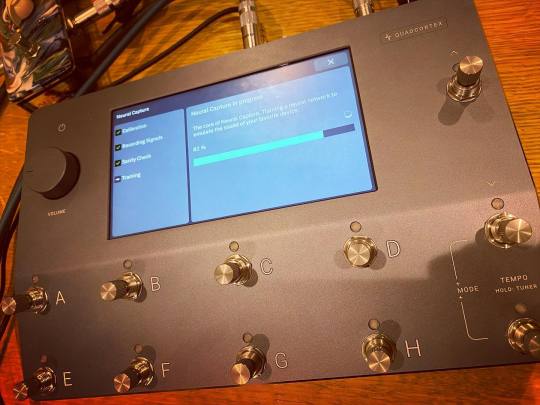
"Nós chegamos na parte da MASS Tour PHASE 03 "LAST MILE" onde o único show que falta é o Toyosu.
Nessa turnê, eu usei o meu recém adquirido Neural DSP "QUAD CORTEX", que comprei pouco antes dessa turnê.
Eu o levei comigo para introdução como uma nova adição ao meu sistema atual e brinquei com ele durante a turnê, porque o Neural Capture ocupa pouco espaço e não dá pra falar nada contra ele, por isso eu tive que implementá-lo.
Eu planejei isso com sentimentos leves, colocando todos os meus equipamentos enormes nele e usando o sub no lugar dos aplicativos.
Além disso, quando tentei gravar um simples OD, a qualidade ficou perfeita, mas os erros pequenos se tornaram incrivelmente irritantes, por isso eu acabei tendo que escolher em meio a vários padrões para gravar uma pequena parte.
Quando eu configurei a gravação para ser feita pelo Inst, não tive dúvidas de que seria uma substituição fantástica dos gabinetes para captação.
Essa captação funciona bem e o processo é inesperadamente divertido e eu tenho a impressão de que irei criar novos aspectos de criação de som diferente dos comuns que eu já conheço de agora em diante (mas eu já estou bem atrasado...).
Eu quero usar isso o quanto antes no meu sistema."
4 notes
·
View notes
Text
Gon Muruaga & Marcus Wärnheim
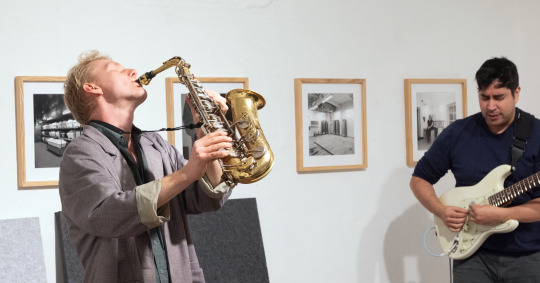
// FI //
Aivan liian harvoin tähdet sallivat sen, että Gon Muruaga ja Marcus Wärnheim ovat samassa paikassa, mutta kun niin tapahtuu, tapahtuu musiikkia. Syntyvä äänimaailma on kirkuva, kuiskaileva, maata järisyttävä ja hiuksia nostattava, mutta ennen kaikkea vilpitön ja hetkessä syntynyt.
Sunnuntaina 7.4.2024 klo 18 B-gallerialla kuulemme heiltä duosetin. Juhli sitä että olet elossa ja tule kokemaan äänien tuoreutta!
Gonzalo Muruaga Olguin on argentiinalainen sähkökitaristi, improvisoija ja säveltäjä. Hän on aktiivinen Pohjoismaiden ja Baltian kokeellisen musiikin kentällä. Hänellä on nykyimprovisaation tutkinto Viron musiikki- ja teatteriakatemiasta. Hänen musiikillinen lähestymistapansa yhdistää elementtejä jazzista, vapaasta improvisaatiosta, nykymusiikista, kokeellisesta musiikista, äänitutkimuksesta ja monitieteisestä yhteistyöstä. Hän työskentelee musiikkiteknologian alalla Neural DSP:ssä, jossa hän yhdistää luovuutta, insinööritaitoa ja taiteellista työtä. Hän on ollut kiinteästi mukana Quad Cortexin kehityksessä ja tuotannossa, yhtenä maailman tehokkaimmista vahvistinmallintajista.
Taiteellisessa työssään Gon keskittyy syvän kuuntelun rajojen venyttämiseen elektroakustisella musiikilla ja äänisuunnittelulla. Hänen duonsa Duende valmistautuu toiseen Euroopan-kiertueeseen, soittaen ainutlaatuista vapaan improvisaation ja noise musiikin sekoitusta. Hän on tehnyt yhteistyötä Eesti Arnold Schönbergi Uhingin (Pärnu-Tallinna) ja Micro Tonal Studiosin (Helsinki) kanssa, esiintyen 22edo-kitaralla.
Marcus Wärnheim on ruotsalainen alttosaksofonisti ja improvisoija, joka tällä hetkellä asuu Amsterdamissa. Hänen taiteellinen tuotantonsa perustuu uteliaisuuteensa soundista, jota hän työstää intensiivisen kuuntelun ja instrumenttinsa fyysisten mahdollisuuksien perusteellisen tutkimuksen kautta. Viime vuosina hän on keskittynyt akustisiin sooloesityksiin, improvisaatiotapaamisiin, muiden sävellysten tulkintaan sivumuusikkona sekä poikkitaiteellisiin yhteistyöprojekteihin tanssijoiden ja sirkustaiteilijoiden kanssa.
Gon Muruaga - sähkökitara
Marcus Wärnheim - alttosaksofoni
Konsertti alkaa klo 18.00
Vapaaehtoinen pääsymaksu
ESTEETTÖMYYSTIEDOT
B-galleria ei valitettavasti ole esteetön tila. Pääsisäänkäynnissä Aninkaistenkadulta B-galleriaan on pieni portaikko, jossa on viisi porrasaskelta. Tilan ulko-oven aukon leveys on 71,5 cm, portaiden leveys 105 cm ja portaikon korkeus 86 cm. WC-tilamme ei myöskään ole esteetön pienen kokonsa vuoksi.
// EN //
All too seldom the stars align in such a way that Gon Muruaga and Marcus Wärnheim can be in the same room, but when they do, music appears. The sounding reality that emerges is screaming and whispering, earth shattering and hair raising, but first and foremost earnest and created in the moment. This Sunday they will be performing a duo set; celebrate that you are alive and experience some fresh sounds!
Gonzalo Muruaga Olguin is an Argentinian electric guitar player, improviser and composer. He is active in the Nordic and Baltic experimental music scenes. He holds a degree of Contemporary Improvisation from the Estonian Academy of Music and Theater. His musical approach combines elements of jazz, free improvisation, contemporary music, experimental music, sound investigation, and interdisciplinary cooperation. He works in the music technology area at Neural DSP, where he combines creativity, engineering, and artistic work. He has been deeply engaged in the development and production of Quad Cortex, one of the most powerful amplifier modelers in the world.
In his artistic work he focuses on pushing the limits of deep listening with electroacoustic music and sound design. His duo Duende is preparing for the second European tour, playing a unique mix of free improvised music, noise. He has collaborated with the Eesti Arnold Schönbergi Uhing (Pärnu-Tallinn) and Micro Tonal Studios (Helsinki) performing with the 22edo guitar.
Marcus Wärnheim is a Swedish alto saxophonist and improviser, currently based in Amsterdam. His artistic output is primarily based in a genuine curiosity of sound, which he works with through intense listening and a thorough research of the physical possibilities of his instrument. In recent years he has been preoccupied with acoustic solo performances, improvisational meetings, interpretation of other’s compositions as a sideman, as well as trans-disciplinary collaborations with dancers and circus artists.
Gon Muruaga - electric guitar
Marcus Wärnheim - alto saxophone
Music starts 18.00.
Voluntary entrance fee
ACCESSIBILITY INFO
Unfortunately the gallery space is not wheelchair accessible. The main entrance has a small staircase with five steps (door width 71,5 cm, staircase width 105 cm & staircase height 86 cm) and the toilet is small.
1 note
·
View note
Text
Neural DSP Morgan Amps Suite - Vintage Charm and Modern Fidelity
Neural DSP introduces the Morgan Amps Suite, a guitar amplifier plugin that promises a perfect mix of vintage warmth and modern clarity. This latest offering from Neural DSP, a leader in digital guitar processing, brings the revered tones of Morgan Amplification’s boutique tube amps into the digital realm.
Morgan Amps Suite
The Morgan Amps Suite features three iconic Joe Morgan tube amp designs,…

View On WordPress
#64-bit#AAX#AC20#amp#Apple#Apple Silicon#AU#Celestion Creamback#compressor#DAW#delay#Echo#effects#Joe Morgan#MAc#Morgan Amps Suite#Morgan PR12#Neural DSP#overdrive#plugin#reverb#silicon#software#Standalone#SW50R#Tremolo#tube#video#VST#Windows
0 notes
Text
Review of Guitar Rig 7 Pro: Presets are Enough
Guitar Rig is likely one of the most famous amp simulator plugins in the market. Despite various brands like IK Multimedia, Positive Grid, Brainworx, Neural DSP releasing their own amp simulators, Guitar Rig, launched in 2004, has maintained high visibility in the guitar software market, updating to version 7 this year.

The Guitar Rig 7, released three years after version 6 in 2020, brings some notable updates. The Intelligent Circuit Modeling (ICM) technology, introduced in Guitar Rig 6, is expanded to include more amps. According to Native Instruments, ICM uses machine learning to precisely replicate the feel of hardware.
Additionally, features added through a collaboration with iZotope catch attention. The 'Kolor' saturation plugin, adding color to the tone, includes two settings from iZotope's Trash. Moreover, the Maximizer module from Ozone is incorporated, providing effective control over guitar track volumes.

Guitar Rig has traditionally stuck to a rack-style interface design. However, version 7 introduces a sidebar on the right, allowing users to see the signal flow of connected modules at a glance. Users can drag and rearrange modules easily by looking at the sidebar.

Amp Modeling Quality in Guitar Rig 7 Pro
As of 2023, most amp simulators already deliver high-quality sound. However, Guitar Rig's amp modeling leans towards convenience rather than hyper-realism. This doesn't mean Guitar Rig sounds bad; it provides well-crafted and clean tones.
Compared to products like Amplitube or Brainworx, Guitar Rig offers a smoother feel with less gritty texture. The noise gate effectively manages noise without compromising the overall tone.

If you're seeking ultra-realistic amp sounds or the raw feel of a tube amp, Guitar Rig's sound might not align with your preferences. However, for composers and producers needing clean and organized guitar recordings, it's incredibly convenient.
Regarding mic positioning, unlike Amplitube's extensive options, Guitar Rig offers two mic settings with the ability to blend distances. While this may be a limitation for users wanting intricate control, it's a user-friendly feature for those who prefer adjusting mic distance and room tone with a single slider.
https://www.youtube.com/watch?v=ex-POrZDAmI
Diverse Presets Offered
One standout feature that sets Guitar Rig apart is its multitude of presets. Unlike some products that focus on amp head settings and basic effects, Guitar Rig shines when it comes to incorporating various FX modules in a rack-style setup.
Starting from simple guitar effect pedals like overdrive, distortion, delay, and reverb, Guitar Rig allows users to explore harmonic exciters, synthesizers, and unique spatial effects. Even without delving into individual module settings, the default presets provide a wide range of tones.
This is a significant advantage for composers and producers, offering the opportunity to experiment with a plethora of effects almost at the level of synthesizers. Guitar Rig is not limited to guitars; it can be used as an effective effects processor for drums, EP, and other instruments, thanks to presets tailored to different input styles.
https://www.youtube.com/watch?v=4lqNCIswZaI
Input/Output Gain Staging
Amp simulators respond richly to input gain control, and Guitar Rig is no exception. While it tends to deliver clean tones, pushing the input gain provides enough room for gritty tone shaping. However, for experiencing the effects of various modules and presets, excessively raising the input gain is unnecessary. Desired effects can be achieved with minimal gain.
Output gain staging is also convenient. Avoiding clipping issues is easily managed with built-in limiters, Ozone's maximizer, and volume modules. Balancing the volume gap between clean and driven tones is effortlessly achievable.

Conclusion on Guitar Rig 7 Pro
I had preconceived notions about Guitar Rig, perhaps originating from older versions, considering its sound as 'bland' for a player. Rediscovering the sound of Guitar Rig was a revelation, showcasing how much the quality gap in amp simulator plugins has diminished.
As performance levels equalize, having a clear target audience or design philosophy is crucial for differentiation. Guitar Rig stands out with its creative and diverse sound experiences based on presets, offering a unique distinction from other plugins.
The emphasis on preset-driven, creative, and varied sound experiences sets Guitar Rig apart. The plugin provides a unique differentiator in a market where performance levels are increasingly standardized.
Read the full article
0 notes
Text
My version of Djenty Magbaleek. 🤣🤣
Plugins used:
Synth - U-he Diva
Orchestra - Audio Imperia Nucleus
Drums - GGD Periphery IV Kit
Bass - Djinn Bass/Parallax
Gtr Amp/Effects - Neural DSP Nolly/JST Toneforge Misha/Neural DSP Omega Suite
Gusto mo din pagawa ng instrumental ng kanta mo? Mura lang saken mga 10k pesos tapos 1 month ko gagawin per song HAHAHAHAHAHAHAHAHA! JK.
0 notes
Text
ENTRY 11: SUMMATIVE PROCESS
Creation Process
Structure, Tempo and Time signature:


The tempo and Time signature for both tracks are 80bpm, 4:4, which is suitable for the genre- many songs from Neo soul artists I follow such as Nao Yoshioka and Toshiki Soejima write songs with similar tempos: Toshiki Soejima- Life: 79bpm (Soejima, 2021), Nao Yoshioka Got me: 81bpm ((Yoshioka, 2020). A slower tempo makes the song feel smooth and allows chords/embellishments to breathe within the mix. It also helps to ease the ear into the many modulations that occur.
The track has 48 bars and is structured as displayed in the picture above.
Key Signature, Rhythmic and melodic ideas:
Throughout the track, I switch between D major/minor, G minor and E altered scales. Additionally, as evidenced by the outro, there are sections where I incorporate multiple passing chords which create an ambiguous ascending/descending motion. The outro starts with a Gm9 chord (rooted on the A string), then descends gradually after using various dominant 9 and minor 9 chords, resolving with E major 7/B - this created a walking bass movement which is common in Neo Soul and Jazz and ultimately assisted in resolving the tension. The altered dominant chords allow me to play notes from the altered scale which add more tension than those from mixolydian (if using a regular dominant chord).
Personally, I enjoy the constant modulations within the track as they help to alter the course of the melody- adding unpredictability and interest to the song. Switching between parallel keys (D major to D minor) puts an emphasis on the intervallic movement of the 3rd, 6th and 7th- changing from a natural to a flat in this context is very effective and pleasing to the ear.
Harmonic ideas:
I have used a variety of extended major/minor and dominant chords (7ths,9ths)- most of which utilize Drop 2 and Drop 3 voicings- again, a very common voicing used by Neo soul artists such as Melanie Faye and Kazuki Isogai. The large span of intervals and octaves contained within these chords allow for the absence of a bass guitar, due to the thumb playing the bass notes. This is certainly a technique I have acquired from listening to the aforementioned artists. Moreover, adding percussive elements via slapping the strings with my thumb and palm is another example of their influence in my playing. Pull offs, Hammer ons, vibrato, legato and finger/hybrid picking are more examples of techniques I use in this track. Legato and vibrato help to make my melody lines emulate a vocal line, giving it some personality.
Technical/production techniques:
Firstly, I have double tracked the keyboard for the intro, panning left 100% and right 100%, adding a fader as they enter the mix. This technique creates a large, stereo-like effect- combined with a stretched chord voicing, this creates warmth and the sense of fullness. I set the volume of the keys to -4.5db so that they would allow the guitar to cut through them. In the EQ, I have increased the bass and air frequencies (this is where the warmth derives from) and slightly decreased the mids as this is where the guitar will enter. Compression has been applied, using a slow attack time and fast release, thus creating a natural sound.


I used the clean amp tone from Neural DSP- ‘Archetype: Plini’ for all sections of the track asides from the chorus, using reverb (space knob turned to almost maximum), compression and EQ- settings are seen below. After playing the track without EQ, I felt as if the bass, due to the nature of the chord voicings, was slightly overbearing, therefore I decided to lower the 65-125k frequencies. Furthermore, I wanted to make the tone sound distant so I also lowered the 4k-8k frequencies- making the track sound darker. However, after adding reverb, this created a very classic Neo soul tone.




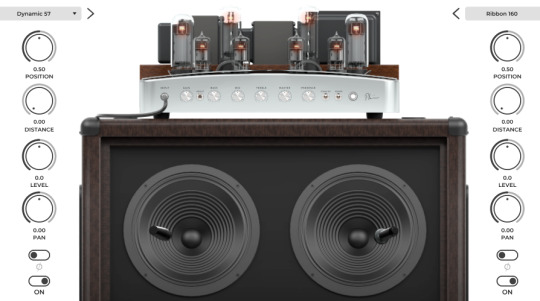
The rhythm section for the chorus adds an extra compressor and EQ VST to help increase the volume of the fingerpicking; without extra compression, the bass tones were too overwhelming, drowning out the higher notes. The compressor settings consist of a low ratio, slow attack, but fast release time, medium Knee and a subtle boost to the makeup gain- these settings made the compression feel natural, whilst still controlling any spiky transients. A separate EQ was introduced to eliminate a fuzzing sound around the 3-5k frequencies (4.1k) (High shelf).


For the lead section of the chorus, I have used a clean amp from Neural DSP- ‘Archetype: Tim Henson’ with a boost, compressor, chorus and reverb pedal, alongside some EQ. These effects help to separate the lead from the rhythm as the sound is boosted and has more sustain. A separate EQ is used again to eliminate fuzzing sounds around the 4-5k frequencies (4.4k) (High shelf).

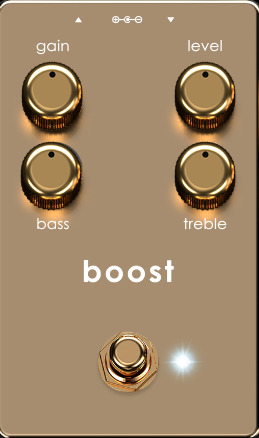
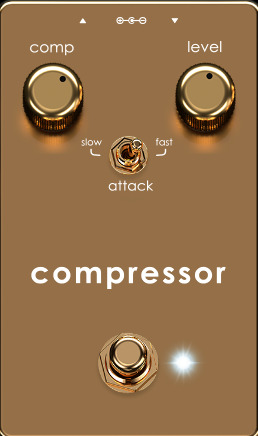
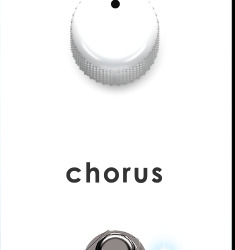




Alternative Edit:
For the alternative edit (aka Live) I am playing the same track, however omitting a chord from the chorus and embellishments from verse 1 of the original song. Furthermore, no keyboard or lead section is present and some chords are not arpeggiated in the same way. In verse 1, I have added a walking bass line of chromatic notes before playing the Gm7/Bb. Additionally, the pre chorus and outro have been extended to 12 and 16 bars respectively making this version 52 bars in total. The outro differs slightly by incorporating an ascending run after the descending run- I do this by adding extra dominant and minor 9 chords, before resolving to a Bb Major 7/F. The tremolo arm is also used in this version to give extra vibrato to chords. Overall, the alternative edit has less lead playing and embellishments, but more space between chords, thus conveying an even calmer vibe than the original track.
In terms of production techniques, the live version is more limited as I’m only playing one track of the guitar, no extra fills or instruments. I am using the ‘acoustic clean’ preset on the ‘STL Tonality: Andy James’ plugin, alongside a compressor, EQ and a new reverb pedal (‘lopass’ filter set to maximum). Personally, I feel as if this reverb pedal is even more spacious than the one used in the original track; it has more sustain. The compressor has a slightly faster attack time (7.2ms), but a much longer release time (100ms) resulting in a very natural sound, allowing considerably more dynamic range than the original track- I feel that this is more appropriate for a live environment. The EQ cuts out all frequencies over 2.6k (high shelf), removing all upper mids and preventing the guitars from having too much bite.

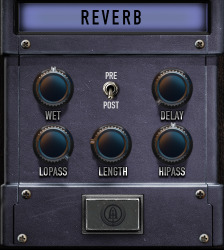
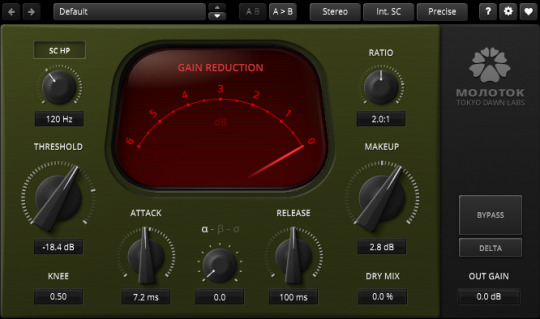

0 notes